Photographic Fictions: Montages, Multiples…and Mischief (Page One)
Photographic Fictions: Montages, Multiples…and Mischief (Page One)
Three simple techniques account for the majority of manipulated photographs ever made. Composite photographs, also called photomontages ( below, left) combine images from multiple sources into a single picture. Multiple exposures (below, center) generally are produced on a single negative by a single camera. Photocollages (below, right) combine pieces physically cut out of various photographs into a single new picture, sometimes with details changed or added by an artist.
|
|
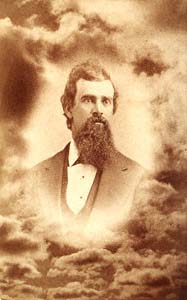
|
|
Unidentified photographer (U.S.): Bust portrait of a man in clouds. Albumen cabinet card, circa 1870.
|
|
|
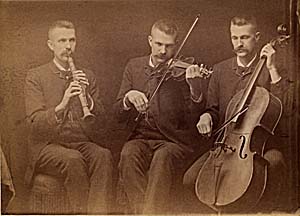
|
Abel J. Whalen (active Michigan, 1862-1897): A One-Man Trio. Albumen print cabinet card, circa 1895
|
|
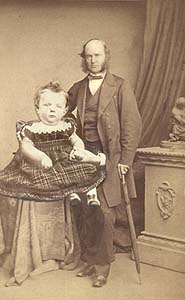 |
|
Unidentified artist: The Giant Baby. Photocollage on a carte de visite portrait by Bassano of London, circa 1865
|
|
|
|
|
Composites (Photomontages)
Beginning in England with the works of Oscar G. Rejlander and Henry Peach Robinson, composites were used to make ambitious large-scale exhibition photographs as early as the 1850s. The techniques used were soon employed around the world. Here are two examples reconstructing the methods used for making photomontages.
|
|
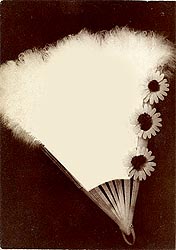
|
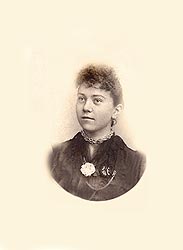
|
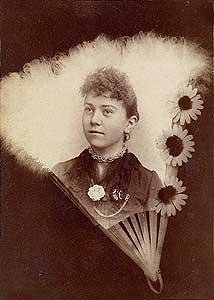
|
|
The photographer begins by making a print of the fan, covering the central area to leave it blank.
|
Before the photograph is fixed, the portrait negative is put in place and the print is exposed again.
|
Blissenbach Studio (Mankato, Minnesota): Composite, Woman and Feathered Fan. Cabinet Card circa 1895.
|
|
How to Visit Niagara Falls Without Leaving Home
With the advent of dry plates in the 1880s, it became possible to capture water scenes with dramatic breaking waves. Here, an unknown photographer has leveraged that achievement — either by taking such a negative or by purchasing one — and then using it as a background for studio portraits. While it seems likely that this image was created near Niagara Falls, it is possible that the studio portrait could have been made anywhere, and then combined into a personalized souvenir. The process begins by taking an ordinary portrait, perhaps in a corner of the studio with natural-looking rocks in the foreground.
|
|
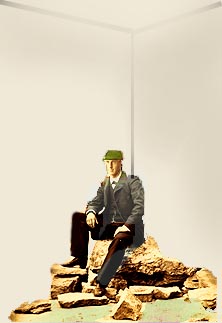 |
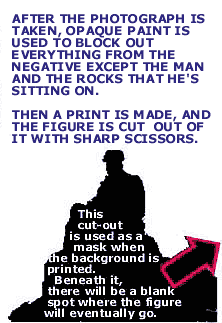 |
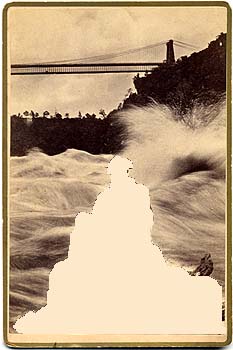 |
Next, the negative showing the man on the rocks is printed onto the same piece of photographic paper as the background. Since everything else is covered with opaque paint, only the figure will print — fitting neatly into the hole left for it by the mask.
|
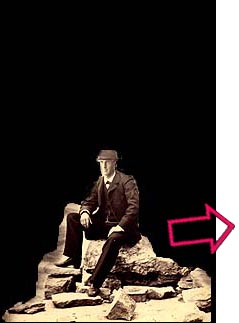
|
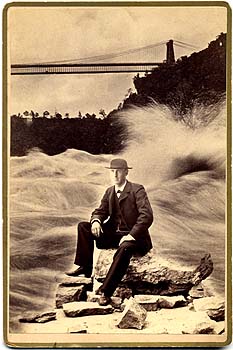
|
|
|
|
Unidentified Photographer: Man Seated Before a Breaking Wave, Niagara River (Composite) Cabinet Card, before 1886.
|
|
|
Or Click Here for the Museum’s Home Page 
-
Images Copyright © MMII — MMV The American Photography Museum, Inc.
- Text and Design Copyright © MMV The American Photography Museum, Inc.
- Digital Reconstructions by Wm. B. Becker
- Photographic Fictions, American Museum of Photography and the logo are Trademarks and Service Marks of The American Photography Museum, Inc.










